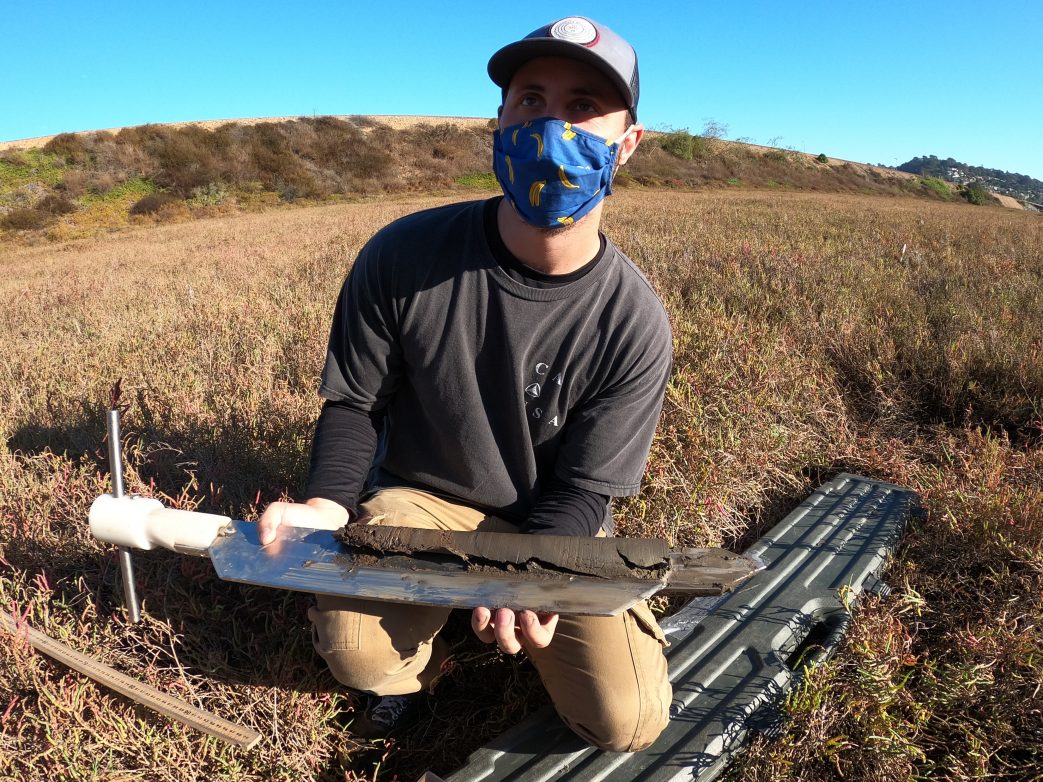This week the Center is highlighting undergraduate student researcher, Austin Lupo. Austin is a fourth year UC San Diego Environmental Systems major with a focus in Environmental Chemistry. He is working under the guidance of CCCIA postdoc Matthew Costa. He will be graduating in June 2021.
Q: What does your research project entail?
A: Our research project focused on the “blue carbon potential” of San Dieguito Lagoon in San Diego County. More specifically, we collected sediment samples for carbon analysis at a small section of salt marsh called “Brigantine Basin.” Our goal was to determine both the amount of carbon that is currently stored in the salt marsh and the rate at which carbon is being sequestered. We hope that the data and results from our research can provide a useful framework for researching and understanding the blue carbon potential of the coastal wetlands of San Diego County.
Q: What aspect of your research helps us better understand or adapt to climate change?
A: Blue carbon ecosystems, like mangroves, salt marshes, and seagrass beds are very efficient carbon sinks. Unfortunately, a large portion of San Diego County’s wetland area has been lost due to human activities. As the coastal wetlands of San Diego county are relatively under-sampled in terms of blue carbon, we hope that our early estimates at Brigantine Basin will highlight the importance and effectiveness of these coastal wetlands in sequestering and storing carbon, and hopefully encourage further research to learn how to best manage and restore these valuable ecosystems.
Q: What opportunities/parts of the project excite you most?
A: The most exciting part of this project is the possibility of it turning into something much bigger than it is now. As I only had the past year to work on this project, not to mention the setbacks provided by the COVID-19 pandemic, our grandiose plans were cut a bit short. But, as more sampling takes place in San Diego County, I think that this and other similar projects will really open people’s eyes to the importance of protecting and restoring these ecosystems. Also, I got to play in the mud all day. Who wouldn’t be excited about that?
Q: How did you get interested in carbon ecosystems or science in general?
A: I had actually briefly learned about blue carbon ecosystems in an undergrad course and found it really interesting, so I began reading papers and articles on my own time. When I was tasked with finding a mentor for my senior research project I was sent through a labyrinth of zoom meetings to find someone with similar research interests. As luck would have it, my final meeting was with postdoctoral researcher Matthew T. Costa. Matt’s research largely focuses on blue carbon ecosystems, so it was a perfect fit.
Q: What are some surprising things that people might not know about you?
A: Aside from my closest friends, some people may be surprised to find out that I am a die-hard San Diego Padres fan. I rarely miss a game, and if I do, I record it so I can watch it later. My mentor Matt doesn’t know this, but I would often plan my lab schedule so that I could be finished before the games would start. Sorry, Matt!
Thanks for sharing, Austin!


